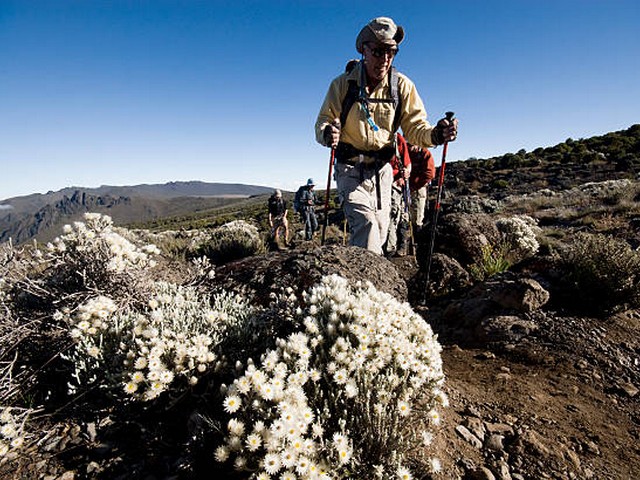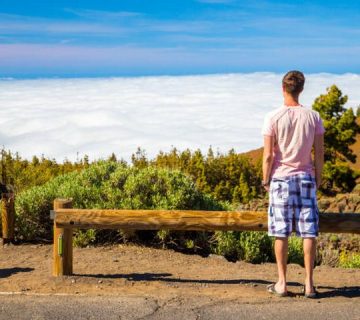Embrace the Summit: Kilimanjaro Solo Trekking for Experienced Adventurers
Kilimanjaro Centre for Trekking and Ecotourism – KCTE
Mount Kilimanjaro – a name that stirs the spirit of the adventurer in each of us. Known as the "Roof of Africa," Kilimanjaro rises majestically above the East African plains, calling to those who dare to challenge their limits. For the experienced adventurers who prefer to march to the beat of their own drum, a solo trek up Kilimanjaro offers an unrivaled journey of self-discovery and personal triumph. In this blog, we at Kilimanjaro Centre for Trekking and Ecotourism (KCTE) will guide you through the essentials of planning your solo trekking experience on this magnificent mountain.
Why Choose Kilimanjaro for Your Solo Trekking Adventure?
The Allure of Independence
Trekking solo on Kilimanjaro allows you to experience the mountain on your terms. Without the constraints of a group’s pace or preferences, you can fully immerse yourself in the tranquility and raw beauty of your surroundings. This independence also tests your resilience and decision-making skills, enhancing the sense of achievement when you reach the summit.
Tailored Challenges
As an experienced adventurer, you know the thrill of tailoring a challenge to fit your skills and pushing your boundaries. Kilimanjaro offers several routes, each with its unique landscapes and difficulties. Choosing to trek solo means you can select the path that best suits your experience and adventure spirit.
Personal Reflection
Solo trekking provides a rare opportunity for introspection and personal growth. As you ascend through Kilimanjaro’s diverse ecosystems – from lush rainforests to stark alpine deserts – you’ll have the chance to reflect on your journey, both on the mountain and in life.
Preparing for Your Solo Kilimanjaro Trek
Choosing the Right Route
Kilimanjaro boasts a variety of routes, each offering different experiences and challenges. Popular choices for solo adventurers include:
- The Machame Route: Known as the “Whiskey Route,” it’s perfect for those who seek a challenging but scenic path.
- The Lemosho Route: Offers a more remote and gradual trek with higher success rates.
- The Rongai Route: Ideal for those looking for a quieter, less crowded path.
Physical Preparation
Preparing for Kilimanjaro is no small feat. Start training months in advance, focusing on cardiovascular fitness, strength training, and endurance. Also, consider training hikes to simulate Kilimanjaro’s conditions.
Mental Readiness
The mental challenge is as demanding as the physical. Prepare yourself mentally for the solitude and the high-altitude trekking. Techniques such as meditation or motivational readings can be very beneficial.
Logistics and Safety
Even solo trekkers need support. At KCTE, we provide experienced guides and porters who respect your need for independence while ensuring your safety and comfort. We also handle all logistical aspects, from permits to camp setups, allowing you to focus purely on your trek.
Life on the Trail: What to Expect During Your Solo Trek
Daily Routine
Your days on Kilimanjaro start early, often before sunrise. After a nutritious breakfast, you embark on several hours of trekking. Regular breaks help you stay hydrated and energized. Evenings are for resting, enjoying hearty meals, and preparing for the next day’s journey.
Encounters with Nature and Wildlife
As you ascend, keep your eyes peeled for diverse wildlife, including monkeys, exotic birds, and possibly larger animals like buffalos or elephants in the lower forests. The flora changes dramatically as you climb, from lush forests to alpine meadows to the stark, moon-like landscapes at the summit.
Cultural Insights
Though your journey is solo, you’ll meet fellow trekkers and locals along the way, offering insights into the rich culture of the Chagga people, indigenous to the Kilimanjaro region. Embrace these interactions—they enrich your adventure.
Ensuring Your Success on Kilimanjaro
Stay Hydrated and Nourished
The physical exertion and altitude can quickly dehydrate and deplete you. Drink plenty of water and eat balanced meals provided by our KCTE catering team.
Pace Yourself
The Swahili phrase "pole pole" (slowly, slowly) is the key to success on Kilimanjaro. Maintaining a slow and steady pace will help your body adjust to the altitude and increase your chances of reaching the summit.
Listen to Your Body
Monitor yourself for signs of altitude sickness and consult with your KCTE guide regularly. Safety is paramount, and our guides are trained to make critical decisions that ensure your well-being.
Call to Adventure
Are you ready to embark on a life-changing solo trek up Kilimanjaro? Kilimanjaro Centre for Trekking and Ecotourism (KCTE) is here to guide you to the summit. With expert planning, local knowledge, and unwavering support, we ensure your journey is safe, enjoyable, and profoundly rewarding. Let us help you achieve your dream of conquering Kilimanjaro solo. Contact us today and take the first step towards your summit!
FAQs: Kilimanjaro Solo Trekking for Experienced Adventurers
Q: Do I need a guide to trek Kilimanjaro solo?
A: Yes, Tanzanian law requires all trekkers to have a licensed guide. At KCTE, we provide experienced guides who respect your independence while ensuring your safety.
Q: What is the best time of year to trek Kilimanjaro?
A: The best times are during the dry seasons: January to early March and June to October. These months offer the clearest skies and most favorable weather conditions.
Q: How do I acclimatize properly to prevent altitude sickness?
A: Proper acclimatization involves taking it slow ("pole pole"), staying hydrated, and possibly spending extra days on the mountain to adjust to the altitude. Our KCTE itineraries are designed to maximize acclimatization.
Q: What should I pack for a solo trek on Kilimanjaro?
A: Essential items include thermal layers, waterproof gear, a good quality sleeping bag, snacks, a water purification system, and a first aid kit. KCTE provides a comprehensive packing list to all our clients.
Q: How long does it take to climb Kilimanjaro?
A: It typically takes 5 to 9 days, depending on the route and your pace. We recommend routes that allow for optimal acclimatization, often around 7 to 8 days.
Embrace the challenge and the beauty of Kilimanjaro with us at KCTE. Your adventure of a lifetime awaits!




